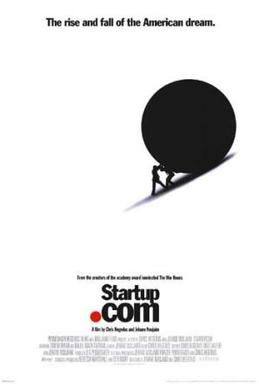August 19th, 2013 § § permalink


Startup screen (Photo credit: Wikipedia)
Economic crisis is still the dominant topic in Slovenia, with worrying news and indicators popping up daily. At the same time, Zemanta has never been better, and is actually growing fast. Of course, because we are active on global market, rather than dependent on local economy. Except in one aspect – hiring.
We are looking for several new exceptional colleagues in our Ljubljana office. brilliant, smart, ambitious software developers. It’s not surprising that a lot of people are applying for the position, and I’m very happy to see that many of them actually fit the profile we are looking for.
I’m starting to call it ‘startup engineer‘, to differentiate it from other software development jobs, like traditional IT, systems integrations or website development. many students coming from the universities here are not aware of the difference, and I think we, the startups, have to be very loud about how differently we work. here is a short list of the type of differences, would love to compile a longer one with your help:
- problem-solving: we are a product company, building a product of our own. there is no external client inventing and changing the specs all the time. there is no map of where we are going. we are learning with every step what the next step will be. thus there are not many repetitive tasks. every day actually brings new challenges. some people don’t handle such uncertainties well. startup engineers thrive in the challenge.
- freedom and flexibility: to a large extend we don’t care when and how you work. we expect you to do what it takes to understand the challenge well enough, to tell the other how you will solve it. hours, days, languages, locations are up to your judgment. some people cant handle this freedom. startup engineers love the freedom and grow with the responsibility.
- curiosity: the world is changing with incredible and accelerating speed, and we need to stay a step ahead of it. we need to understand the emerging technologies before they become standards. it takes extra time and energy, that doesn’t necessarily pay off always. startup engineers experiment and learn, because they cannot not to. sometimes that’s called being brave.
- global view: even when working on local problems, startup engineers have to understand the world at large, keep in touch with global trends, and think how the flap of the butterfly in silicon valley will affect us here and now.
there are several practical challenges that we are facing when trying to communicate why working in a startup should be attractive option:
- I wish in the future, people looking to work as developers, would be aware of this difference well in advance. ideally even before high school, so that they can optimize their learning for the style of work that suits them best. we see a lot of very compelling candidates, that unfortunately end up working for banks and IT companies, simply because they don’t know that being a developer can mean very different things.
- there is a prejudice that startup jobs are not stable enough, so specially young candidates are discouraged from applying for them. I find this mentality particularly cynical and obsolete. not only have I met a lot of very stable and healthy startups over the years, also the ‘stable’ companies are laying off incredible amounts of people these days, and government jobs are less and less secure as well.
- some candidates, if they happen to know about startups, are convinced that they are not good enough to qualify. they don’t realize that what we need is first and foremost smarts and curiosity, and not PhD quality of theoretical puzzle-solving. at Zemanta, cultural fit is much more important than skills and experience. don’t negotiate with yourself.
I wish we could make this, ‘startup engineer’ a formal post-graduate university program. there are practical skills they could learn, to accelerate their growth, but these will change from year to year. more importantly, by having it as an option within formal educational system, we would be raising the awareness and actually giving some of the students a fair chance to realize their potential. creating it in collaboration with the actual companies would make sure the students end up with a bit more practically useful knowledge built on top of computer science fundamentals, and give them direct access to a pool of employers, that have been doubling every year.
December 17th, 2012 § Comments Off on first three things every new startup founder/ceo should know § permalink
This post was inspired by an entrepreneur who I barely know from one of my previous lives, who sought a meeting because he was put in a position of running a startup. While thinking about what to say to him in the first 30 mins, I realized that it really can be boiled down to a handful of core truths. everything else is a footnote, or tactics.

So, you’re starting a startup with a couple of your good friends? there are only two ways you could have ended up in this situation:
- you are so smart, that you never had to really think hard about what you are doing with your life. you go where it takes you and make it work in your favor, and have fun while doing it;
- or, you’re so dumb, you think doing startups is fun because it’s fashionable and you want to be just like mark
I sure hope you’re of the first kind, or that you are at least smart enough, to recognize yourself in the second description and give up while you still can.

Odyssey (Photo credit: tonynetone)
If you’re still reading, I guess you really want to know what it takes to run a startup. For explaining startup management issues, I really like the Platonic metaphor of a Sailboat. I might explain this some other time in more detail, because for today, we just need to be aware of the Guiding Star – when you are in the middle of the sea, without GPS, and with a couple dozen crew member who’s fates depend on your judgement, it clearly is important that you know which direction to sail to reach the destination.
It is no different in a Startup. you start a startup, because there is something tangible in your mind, that you need to make tangible for everyone else – a vision / an idea, that you see clearly, and can imagine how to do it. that’s your Guiding Star. thinking of that idea gives you strength to move forward, and to think creatively about shortcuts. discussing that idea makes other people join you on the journey, because of your ability to paint it so clearly for them, that they can see their role in getting to the end.
so here’s the heart of the advice for any first-time founder of a startup: never ever loose your Guiding Star. if you stop being obsessed with it, just stop.
Robin Klein taught me a version of this statement: “the main thing is to keep the main thing the main thing.” the flip side of this statement is, that it is better to kill the startup, than to keep working on it without the inspiration of the Guiding Star. Here’s why: as Fred says, a startup CEO has only three jobs to perform:
- communicate the vision, internally and externally
- assemble the best possible team to execute on that vision
- secure the resources the team needs
I would argue that if you have your Guiding Star – if you can really feel your vision, if thinking of it is making you do things rather than sit still – only then will you be able to communicate the vision. and if you can do that, you will assemble the team, and convince the investors needed to succeed.
inevitably you will choose the wrong direction sometimes. and you will be running short on cash. you will have to do hard practical decisions. but if you have the Guiding Star in front of you, the decisions will make sense, so they will be infinitely easier to make. even if you run out of cash completely, and you are forced to kill your company, if you do that while knowing what you believe in, it’s not a failure, it’s just a learning experience.
and lastly, one thing that has nothing to do with you or your idea. Odyssey needed 10 years to return home, and that’s exactly what you are signing up for – assume your startup will consume you as a whole for 10 years. keep that in mind while you are deciding to start it, and while you are doing your everyday decisions. only if the idea is such, that it would still make sense for you in 10 years time, than you can consider it.
good luck.
August 22nd, 2012 § § permalink


Startup.com (Photo credit: Wikipedia)
I’m sure most of you think you agree with this statement, but I bet you are making tons of inefficient decisions because you are trained to expect certain things from your ‘work environment’ aka Job.
But the startup really isn’t a job. To build a startup you don’t need an office, until you actually know why you do – for instance after you have several non-founding team members.
And you most probably don’t need those employees, until you actually know to the hour what they need to do so the founders can build the startup.
And you don’t need vacation, because you don’t have a job. You might need time to think about the pivot, but that’s not vacation. You might need to rest your brain, but don’t expect you will actually unplug. Your entrepreneurial brain can’t unplug. You don’t need time off. If you think you do, you’re in a Job and should stop thinking it’s a startup, because it will fail.
Startup is not a job, it’s just you wanting to achieve a change in the world / other people’s behavior, not taking no for an answer, because you don’t know how to stop, and constantly thinking about a shortcut to the next obstacle on the way. Startup is just a group of people and technologies arranged around the founders that represent the currently shortest way to change the behavior of others. It is the founders passion, and in that it’s similar to works of art – you can’t help yourself but make it work.
Everything else is secondary. Specially (fancy) office space, (expensive) employees and (long) holidays.
May 30th, 2012 § Comments Off on ‘The Golden Age of Silicon Valley Is Over, and We’re Dancing on its Grave’ § permalink


Memory is a Golden Sieve (Photo credit: kern.justin)
… following a point from yesterday, it seems US economy is catching up with Europe:
BLANK: I teach science and engineering. I see my students trying to commercialize really hard stuff. But the VCs are only going to be interested in chasing the billions on their smart phones. Thank God we have small business research grants from the federal government, otherwise the Chinese would just grab them.
via: www.theatlantic.com
May 24th, 2012 § Comments Off on is it a feature or a business? § permalink


YouTube business model canvas sketch by Alexander Osterwalder (Photo credit: Wikipedia)
this article hits on a very important distinction but their point so short-sighted:
It’s almost comical to say there is a new business reality at play. This is because there are so many forces at work lately, that it seems as though new realities are created and killed almost every quarter. Opportunistic turbulence is probably the best term for it. I’d like to call one out for review Features can be business models.
via: www.cruc.es
‘feature’ is just a different way of calling the product’, or maybe, a ‘small product’. but to make it a business, you have to build the business infrastructure around the ‘feature’ – user acquisition, sales, financial controlling, hr, etc…
the only thing that changes is, that you can start with a ‘feature’ and build the rest later. but you better be prepared to do that, or you’ll miss your opportunity.
May 18th, 2012 § Comments Off on Everything you need to know about digital marketing for your business § permalink


Dashboard 1 (Photo credit: Wikipedia)
Lot’s of entrepreneurs are struggling with marketing these days. in fact, I hear that marketing and user acquisition is the single largest bottleneck for new startups.
This is truly remarkable step-by-step how-to guide for kickstarting your online marketing. understanding this is bare minimum that every person should know and understand. if you hire a consultant, make sure you know all this, so that you can asses if (s)he knows more.
If I were a business person looking to understand how to use various digital channel making tools to build up my business, where would I start? What’s the right mix of tools to make this all make sense and work?
via: www.chrisbrogan.com
April 1st, 2012 § Comments Off on SeedTable – finally a decent overview of startups § permalink

I love projects that make large datasets usable. This one took way to long to be done, but finally – now we can stop wasting clicks and get an executive summary of our city’s startups. 🙂
Also, I will take this opportunity to invite you all for a sneak peek at East Start Map – please let me know what we’re missing.
 I have a love/hate relationship with CrunchBase. On the one hand it has great information about startup tech companies. On the other hand, it relies on a wiki-like structure which means it is sometime not updated as frequently or as accurately as old-style databases which used to employ people go over the data regularly.
I have a love/hate relationship with CrunchBase. On the one hand it has great information about startup tech companies. On the other hand, it relies on a wiki-like structure which means it is sometime not updated as frequently or as accurately as old-style databases which used to employ people go over the data regularly.
via: techcrunch.com
February 29th, 2012 § Comments Off on Could crowdsourcing be a better way to make legislation? § permalink

yes! yes! yes!
 Crowdsourcing has proven to be a pretty good way to accomplish things that require a lot of input from different people, including the creation of encyclopedias and the financing of personal projects such as movies and comic books. But could it be used to create legislation as well?
Crowdsourcing has proven to be a pretty good way to accomplish things that require a lot of input from different people, including the creation of encyclopedias and the financing of personal projects such as movies and comic books. But could it be used to create legislation as well?
via: gigaom.com
but really, to actually get there, we need more transparency. basically, that’s the hope behind the open data movement right? if all the data is open, and real-time controlled using automated agents, then everyone can help on decision making. if all data is distilled to transparent chunks of information, then the politics is cleansed back to relationships management, without deceit or manipulation.
the challenge is not so much collection of information anymore, but figuring out when to present which.
August 18th, 2010 § Comments Off on Planning new Hires in a Startup using Capacity Matrix § permalink

Staffing is one of the most important aspects of company growth, and arguably most crucial factor in transformation of a startup into a stable company. The entrepreneur has to always know more than just who’s performing and who isn’t. The entrepreneur has to know who in the company is in the right place, who will be capable of managing teams as they grow, who has the capacity to see beyond the current state and will be pushing the company to the next level.
The evolution of a startup from staffing perspective is a repeating cycle of: (1) hiring people who see beyond the current state, (2) working hard and discovering the right way to incorporate their knowledge into your specific case, to streamline and optimize operations.
It’s really just these two focuses. And the CEO’s job is to always know where in the cycle the team is, what is the next milestone and what kind of talent will see over it.
In my company, Zemanta, I use a method to track our capacities, that shows me just that. It is implemented as a table (not spreadsheet), that maps persons (employees) into roles, according to their experiences.
I believe there is a rather fixed set of roles every company will eventually have to fill. It is probably even possible to formalize it to the point where you could predict the staff requirements based on desired yearly revenue.
Let’s take a look at an example evolution.
Startup company at inception
A typical tech startup might begin with a simple structure: business and tech co-founders. Their capacity matrix will be simple, but overwhelming:
|
in-house |
external |
|
junior |
senior |
|
| sales |
founder 1 & 2 |
|
|
| HR |
|
founder 1 |
|
| accounting |
founder 1 |
|
|
| finance |
founder 1 |
|
|
| marketing |
founder 1 |
|
|
| PR |
|
founder 1 |
|
| leadership |
|
founder 1 (CEO)
founder 2 (CTO) |
|
| engineering |
|
founder 2 |
|
| QA & support |
|
founder 1 & 2 |
|
| design |
founder 2 |
|
|
| business |
|
founder 1 |
|
| IT |
|
founder 2 |
|
| product |
|
founder 2 |
|
| legal |
founder 1 |
|
|
It shows us two founders performing all business tasks with no external help. Note that capacity is not the same as performance. Performance will be based on many external factors, but dependent on time the particular employee has. In the presented case, both founders are severely over-stretched, and can perform reasonably well in just one or two roles, while the rest will be on back-burner.
Most important in this stage is that the founders have senior capacity in leadership. Everything else will be in flux, but without this they will never be able to attract and direct additional team members.
If the company has this kind of capacity matrix, it will inevitably be a technology and product company with good public recognition but poor business performance. Main challenge and milestone in this stage will be attracting early clients or investors, that will enable growing the team to really start working on the services/products.
And the competence matrix tells us that the only way to do this transition successfully will be to find some help for the founders to do things right…
Seed stage – proving the product
Where it will go from there really depends on specifics of the business. For instance, one of the first actions might be outsourcing:
|
in-house |
external |
|
junior |
senior |
|
| sales |
founder 1 |
|
|
| HR |
|
founder 1 |
|
| accounting |
founder 1 |
|
accountans |
| finance |
founder 1 |
|
|
| marketing |
founder 1 |
|
|
| PR |
|
founder 1 |
|
| leadership |
|
founder 1 (CEO)
founder 2 (CTO) |
|
| engineering |
developer |
founder 2 |
rentacoder.com |
| QA & Support |
|
founder 1 & 2 |
|
| design |
founder 2 |
|
consultant |
| business |
|
founder 1 |
|
| IT |
|
founder 2 |
|
| product |
|
founder 2 |
|
| legal |
founder 1 |
|
law firm |
Company in this stage can afford some to spend some money on making the core team more efficient, but the flexibility of working with outside help is much appreciated, since you are still proving that the work has long-term sense. Depending on the type of product you might invest in limited number of developers.
Company’s main focus is still on product and partly marketing and business development. Key milestone to reach will be implementing key metrics that will demonstrate commercial value of the service/product and inventing the specifics of the revenue model.
The competence matrix suggests that the only way to reach next stage will be acquiring knowledge/experience/people in business side – at the end of seed stage, the company is severely over-resourced on product and technology side.
Growth – stability and focus on sales
Next might be professionalizing the development part, by hiring full time staff and possibly even engineering lead, and finding seasoned sales person to kickstart the pipeline:
|
in-house |
external |
|
junior |
senior |
|
| sales |
founder 1 |
VP sales |
|
| HR |
|
COO |
|
| accounting |
COO |
|
accountants |
| finance |
founder 1 |
|
|
| marketing |
founder 1
VP sales |
|
consultant |
| PR |
|
founder 1 |
|
| leadership |
|
founder 1 (CEO)
founder 2 (CTO) |
|
| engineering |
dev team |
VP engineering
founder 2 |
|
| QA & Support |
|
dev team |
|
| design |
founder 2 |
|
consultant |
| business |
|
founder 1 |
|
| IT |
|
founder 2 |
|
| product |
|
founder 2 |
|
| legal |
founder 1 |
|
law firm |
Now, a year in, we have a decently operational company, that is starting to generate revenue, the founders can focus on monitoring the changes in the competitive landscape and the CEO’s job for the next few months (years) will be making sure the roles are performed optimally.
Company becomes sales-oriented and is all about implementing the revenue model, where VP Sales is the key person that will have to overlook, improve, do all the hard work and earn his own staff.
The Sustainable Company
The ultimate state every company should strive for, the state where company works as a stand-alone system is something like:
|
in-house |
external |
|
junior |
senior |
|
| sales |
staff |
VP Sales |
|
| HR |
staff |
HR |
|
| accounting |
staff |
CFO |
|
| finance |
staff |
CFO |
|
| marketing |
staff |
CMO |
marketing agency |
| PR |
staff |
CMO |
PR agency |
| leadership |
|
CEO
CTO |
|
| engineering |
dev team |
VP Engineering |
|
| QA & Support |
staff |
CPO |
|
| design |
staff |
CMO & CPO |
|
| business |
staff |
VP Business Dev |
|
| IT |
staff |
CIO |
|
| product |
staff |
CPO |
|
| legal |
staff |
Lead Council |
law firm |
At this time, every role has a senior manager, reporting to seasoned CEO. Everyone has well defined job descriptions and knows their role in the mechanism.
Most companies never get to this stage – they either stop growing at earlier stages, fail or get acquired. My thesis is that those that fail do so because they fail to find the people that could take them to the next level when timing is right.
Conclusion
We’ve followed a path of a fictional company on the path from idea to professional organization, which was really a process of converting inspiration into experiences. As the company’s focus moves from proving the idea, building the product, implementing the revenue model to stabilizing all aspects of operation, the right staffing will be the key driver of those transitions.
Quite possibly I’ve missed some other important roles. But I hope I managed to convey the main points:
- CEO’s job is figuring out the details of the path between initial state (first table) and final goal (last table)
- the areas you need top performance should have dedicated personnel, ideally seasoned
- this same method can also be used to evaluate staffing in any sub-department




















 I have a love/hate relationship with CrunchBase. On the one hand it has great information about startup tech companies. On the other hand, it relies on a wiki-like structure which means it is sometime not updated as frequently or as accurately as old-style databases which used to employ people go over the data regularly.
I have a love/hate relationship with CrunchBase. On the one hand it has great information about startup tech companies. On the other hand, it relies on a wiki-like structure which means it is sometime not updated as frequently or as accurately as old-style databases which used to employ people go over the data regularly.


 Crowdsourcing has proven to be a pretty good way to accomplish things that require a lot of input from different people, including the creation of encyclopedias and the financing of personal projects such as movies and comic books. But could it be used to create legislation as well?
Crowdsourcing has proven to be a pretty good way to accomplish things that require a lot of input from different people, including the creation of encyclopedias and the financing of personal projects such as movies and comic books. But could it be used to create legislation as well?



